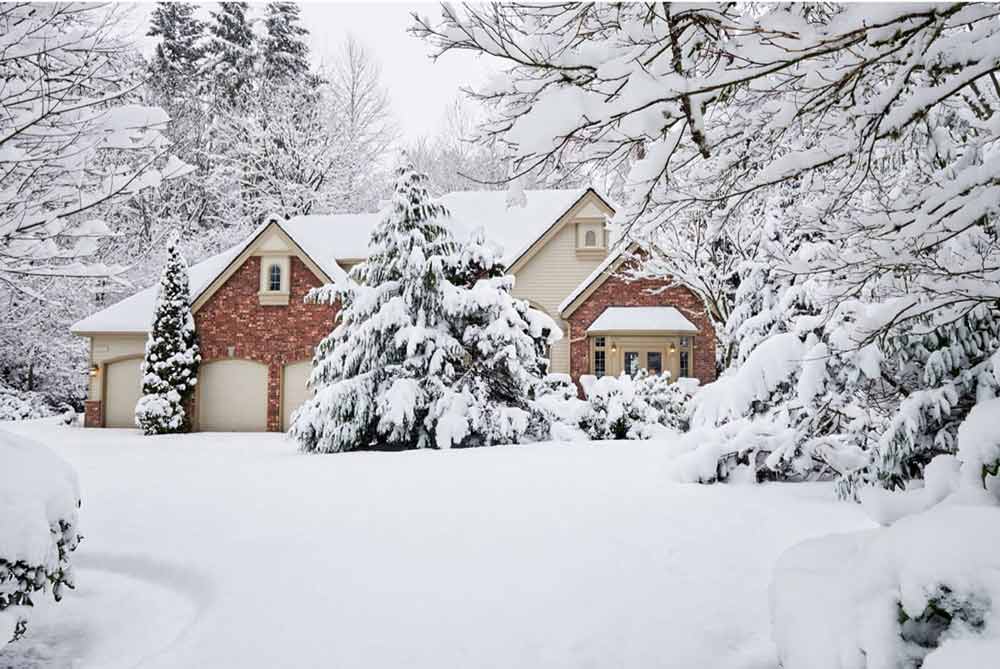You’ve probably already unpacked the mittens, toques and winter boots, but don’t forget about getting your home winter ready too. Here are 10 ways to prep your home inside and out before the snow starts to fall.
Inside:
1. Inspect your furnace
Before you start up your furnace for the season, get a professional to come check it out and make sure it’s safe and running in tip top shape. An annual furnace checkup can help prevent a potential fire and it will often catch any problems before your furnace stops working on the coldest night of the year.
2. Check vents and heaters
Move things like furniture and carpets away from space heaters, radiators or vents and check that there are no debris blocking them.
3. Hire a chimney sweep
Have a wood burning fireplace? Before you start roasting the chestnuts, have a professional chimney sweeper clean and inspect your chimney to help prevent fire and potential carbon monoxide poisoning.
4. Winterize your home
Now is a good time to fix any air leaks, apply new weather stripping, check insulation and pad your pipes. A simple visual inspection of your home inside and out for cracks or gaps can help you spot leaks.
Outside:
- Exterior corners
- Where siding and chimneys meet
- Areas where foundation and siding/brick meet
Inside:
- Electrical outlets
- Window and door frames / weather stripping
- Baseboards
- Fireplace dampers
- Attic hatches
- Wall/window-mounted air conditioners
- Cable tv/phone lines
- Dryer vents to exterior
- Vents and fans
5. Update your thermostat
Now that everything inside is ready to go, turn up the heat. Wondering what the best temperatures are for the season? StatCan reported the average Canadian household sets their temperature to 20-22°C while they’re at home and awake and 16-18°C while away or asleep. Not only will you be nice and toasty, you’ll also save money and the environment.
Outside:
6. Turn off exterior water supply
Shut off the faucets outside your home to prevent the pipes from freezing and be sure to drain hoses or irrigation systems.
7. Check the grading around your house
Pooling water on your property is not the way to get that backyard hockey rink. Instead, this can lead to water seeping into your basement, through the foundation, window wells or frames and causing flooding, mold, rot and poor indoor air quality. To avoid problems, check that the ground around your home slopes at least 5 degrees away on all sides.
8. Clean the gutters
While icicles hanging from your eaves troughs may look festive, it’s actually a recipe for disaster. Make sure you clear the leaves and debris from your gutters before the snow hits to avoid rotted siding and structural damage as the years go on.
9. Call an arborist
Keep your trees safe and strong while avoiding damage from falling limbs. Check for dead, diseased or unsafe branches and call a professional to have them removed in a controlled way. They can also reinforce branches that are over your house, sidewalk or car which can do the most damage when heavy with snow and ice. Here are a few warning signs to look out for:
- Cuts in or peeling bark
- Cracks that extend deeply into or through the trunk
- Dead wood or brown leaves in the tree’s crown
- Leaning trees with cracked/heaving soil or exposed roots at the base
10. Repair handrails, steps, sidewalks, paths and driveways
A sagging step or missing stone in your pathway can become much bigger problems once you add a layer of ice and snow, so be sure to make any needed repairs before the season starts.
Don’t forget…
Restock winter essentials
Be sure to stock up on salt/ice melt and check that your shovels, ice scraper and snow blower are in working condition.
Don’t wait for the snow to melt to start saving. Find out how much it could cost to switch to Sonnet today with our
